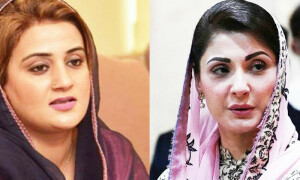
KARACHI: When the audience was told by an official of the National Academy of Performing Arts (Napa) that the arrival of NATANDA Dance Troupe from Sri Lanka to perform at the International Theatre Festival might face a slight delay because of airspace issues, no one gave it enough thought.
But what theatre lovers witnessed over the weekend made them realise that had the group not come, they would have missed out on a brilliant and insightful performance.
The dance act called Wahala was about slavery. Imagine a grim and serious subject such as slavery and the art form of dance that one generally links with mirth and joy; it sounds a bit incongruous. It isn’t. The group conveyed the concept with a combination of aesthetic grace and contextual depth. It was so awe inspiringly poignant that there came a time during the 50-odd minute show when one became pensive and started to think about how in the past human beings enslaved their fellow human beings, the debilitating effects of which can be felt to date.
Directed by Kapila Palihawadana, Wahala introduces the audience to the drift of the dance with footage of the slave trade shown on the big-screen backdrop as ‘Wade in the Water’, a song associated with the struggle of slaves, is played.
The first two dancers appear on stage wearing similar black costumes. The colour is symbolic. It can be construed both as the colour of skin and as the dark situation that the characters find themselves entrapped in. Colour is the key word here.
The big screen used as the backdrop changes hues from green to blue to red, as does the eclectic music, indicating the various phases that the dancers go through. At the heart of it all is the issue of the lack of liberty, which causes tremendous pain to the characters. Their pain is visible and palpable. This happens largely because of the thoughtful choreography which functions as the chief narrator of the story.
And the dancers’ poise and skills resulted in creating the kind of empathy among those who were in the theatre hall that was required for such an important message to be understood.
The artists who took part in the show were Malith Upendra, Dakshika Bandara, Kalani Sachithra, Senarath Nanayakkarae, Narmada Nikethani, Jeewaka Randeepa and Dumidu Hashan.
PS: It’s time our theatre audiences learned that you don’t have to clap every time a particular dance movement or musical piece ends. It’s distracting for the artists, particularly when they are trying to highlight a serious subject.
Published in Dawn, March 18th, 2019















































Dear visitor, the comments section is undergoing an overhaul and will return soon.